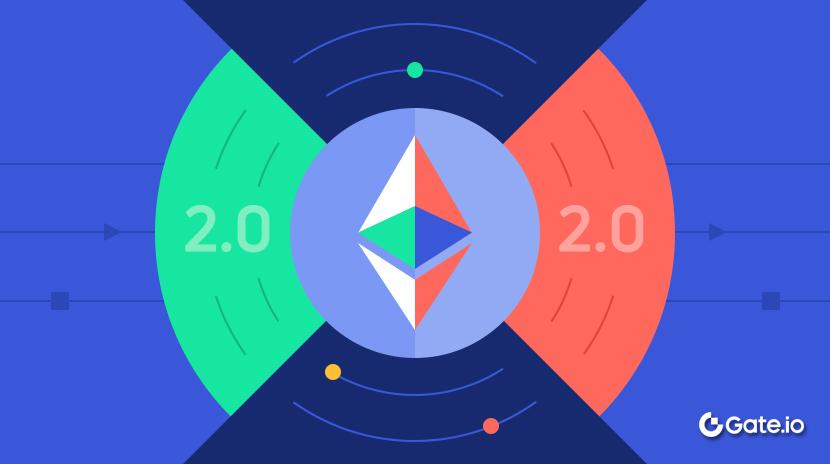x402 Gets Competitive: Unearthing New Asset Opportunities in ERC-8004
x402 is clearly gaining significant traction.
CoinmarketCap data shows trading volume across the x402 ecosystem has increased 137-fold, with the first ecosystem token, PING, rising from zero to a $30 million market cap in just a few days.
Industry experts have published extensive analysis, covering every angle imaginable—from technical fundamentals to project breakdowns.
Yet just two weeks ago, when we published our early analysis of x402 and highlighted the potential of projects like PayAI, the market response was minimal.
In a market where narratives and token lifecycles are shortening rapidly, researching new themes ahead of the curve is the key to identifying related asset opportunities.
Now, with every Twitter refresh, a new “x402 ecosystem project” appears. If you’re only now beginning to study x402, honestly, you may already be somewhat late.
This isn’t to say the protocol itself lacks promise, but the most obvious investment opportunities have already been fully uncovered.
However, while the spotlight is on x402, attentive observers have noticed another protocol frequently appearing in English-language crypto discussions:
ERC-8004.
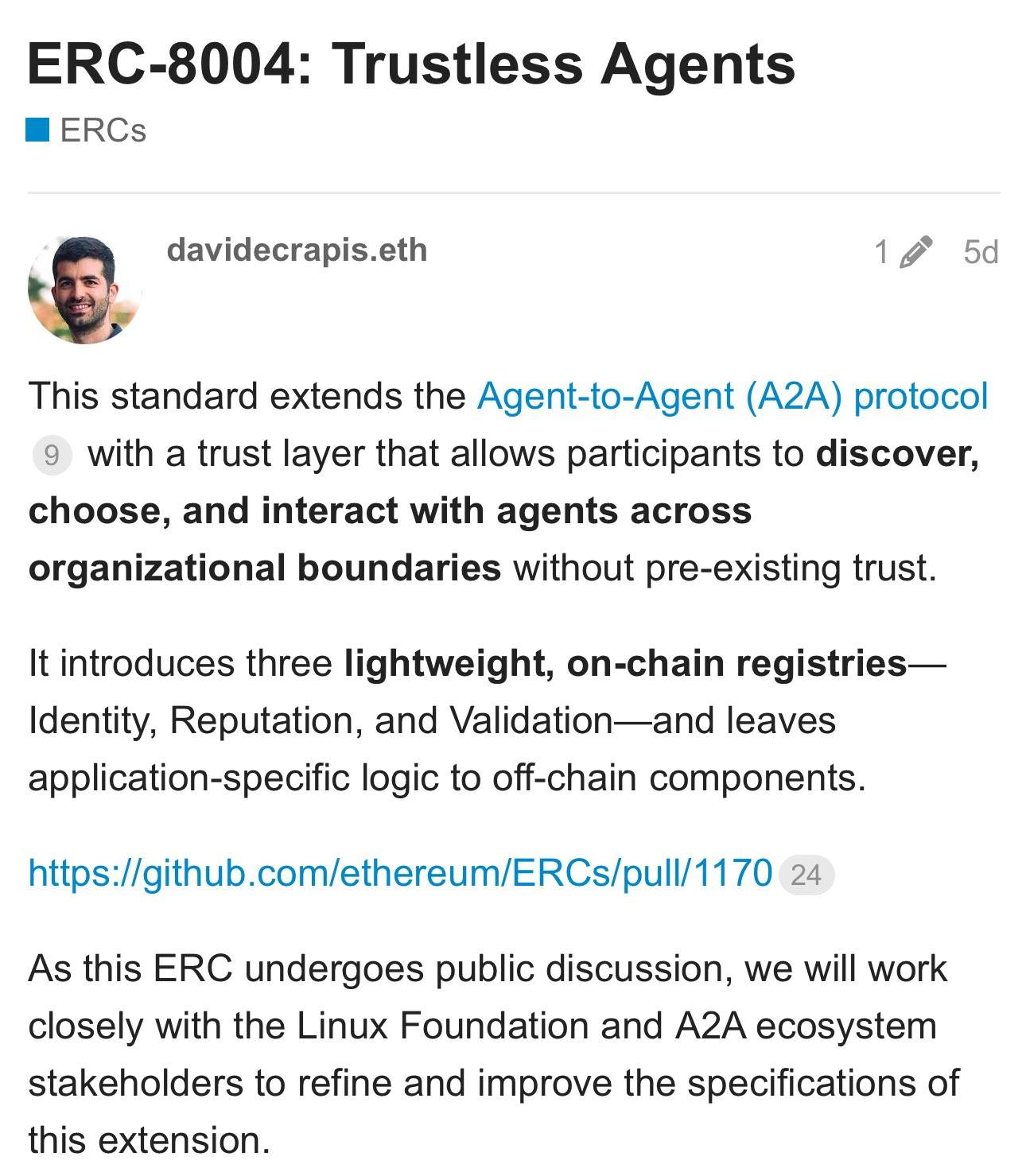
What’s even more interesting, Davide Crapis—Ethereum Foundation dAI team lead and one of the ERC-8004 proposers—shared a notable detail in a September Decrypt interview:
“ERC-8004 will support multiple payment methods, but integrating x402 extensions greatly improves the developer experience.”
Supporting multiple payment methods raises the question: x402 is a payment protocol, so why does ERC-8004 also cover payments? Are they in competition, or do they complement each other?
In early October, when the Ethereum Foundation announced the final version of ERC-8004, its signatories included MetaMask’s Marco De Rossi, Google’s Jordan Ellis, and Coinbase’s Erik Reppel—the creator of x402.
The same individual is driving both protocols. What’s the rationale?
If the x402 breakout revealed the massive addressable market for AI Agent payments, ERC-8004 may represent the other half of this market that remains to be fully understood.
While everyone is pursuing the payment narrative, the real opportunity may exist beyond payments altogether.
ERC-8004: Before You Pay, Give AI a Verified Identity
To understand ERC-8004, start with a core issue in the AI Agent economy.
Picture a collaborative AI scenario:
Your personal AI assistant needs to deliver a complex task: preparing a market analysis report for your upcoming product launch.
It can’t do it alone, so it must hire other specialist AI Agents—a data scraper, a competitor analyst, and a chart designer.
With x402, payments are straightforward—a few lines of code send USDC. But before paying, your AI assistant faces significant identity challenges:
Which of these self-proclaimed “professional data analysis AI Agents” are genuine, and which are fraudulent? What’s their historical work quality? How many positive reviews, and how many complaints?
It’s like running a business in a world without e-commerce platforms, review sites, or business registration. Every transaction is a gamble, every partnership a leap of faith.
In summary, ERC-8004 acts as the “business registry, credit bureau, and certification hub” for AI Agents on-chain.
Every AI Agent gets an ID, a credit record, and credentials—recorded on blockchain, public and immutable.
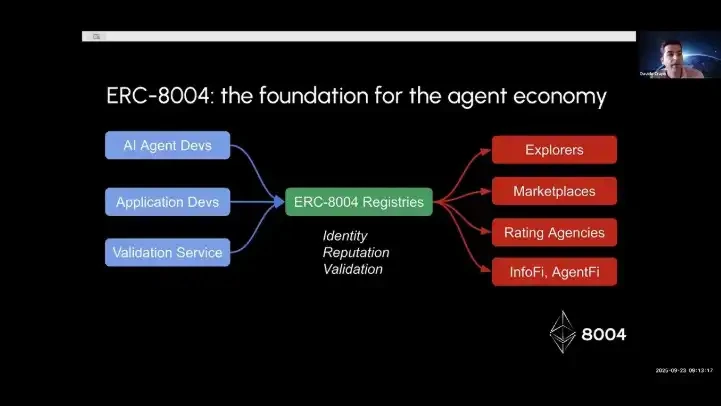
On August 13, Ethereum Foundation’s Davide Crapis, MetaMask’s Marco De Rossi, and independent AI developer Jordan Ellis jointly submitted ERC-8004.
Notably, Jordan Ellis was later confirmed to have close ties to Google’s Agent-to-Agent team.

Simply put, ERC-8004 adds a trust layer to Google’s A2A protocol. The Ethereum Foundation describes it as laying “trusted neutral rails” for the AI Agent economy.
Setting aside technical details, here’s how ERC-8004 works at a high level.
ERC-8004 features three on-chain registries:
- Identity Registry: Each AI Agent receives an ERC-721 token as its ID. AI Agents are minted as NFTs. This means their identity can be viewed, transferred, and even traded via any NFT-compatible wallet.
This NFT points to a standardized “Agent Card” detailing the AI Agent’s name, skills, endpoint, and metadata. Because it’s built on open standards, any browser or marketplace can index it, enabling cross-platform, permissionless discovery.
- Reputation Registry: The “Yelp” for AI Agents. Clients and other AI Agents submit structured feedback, tagging skills and tasks. Critically, they can attach x402 payment proof—only verified payers can review, preventing fake ratings.
All reputation signals are public goods. Anyone can build custom scoring systems based on this data.
- Validation Registry: For high-value jobs, feedback isn’t enough. The validation registry lets AI Agents request third-party verification—via TEE (Trusted Execution Environment) oracles, staked guarantees, or zkML.

This is the credentials hub for AI Agents. An AI Agent claiming to run financial analysis can use cryptographic proofs to show it executed a specific model and produced specific results.
If that’s too abstract, here’s a concrete example:
Suppose an exchange’s AI Agent needs weekly DeFi market analysis but lacks the expertise in-house.
- Service Search: The client AI Agent locates analyst AI Agent Alice in the identity registry and reviews her NFT Agent Card.
- Check Reputation: Alice has 156 positive reviews, 89% completion rate, and authentic feedback with x402 payment proof.
- Escrow Payment: 100 USDC paid via x402 to a smart contract escrow—not directly to Alice.
- Third-Party Validation: After Alice completes the report, validator Bob reviews and signs off in the validation registry.
- Automatic Settlement: Upon validation, the contract releases funds to Alice, and the client leaves a review.
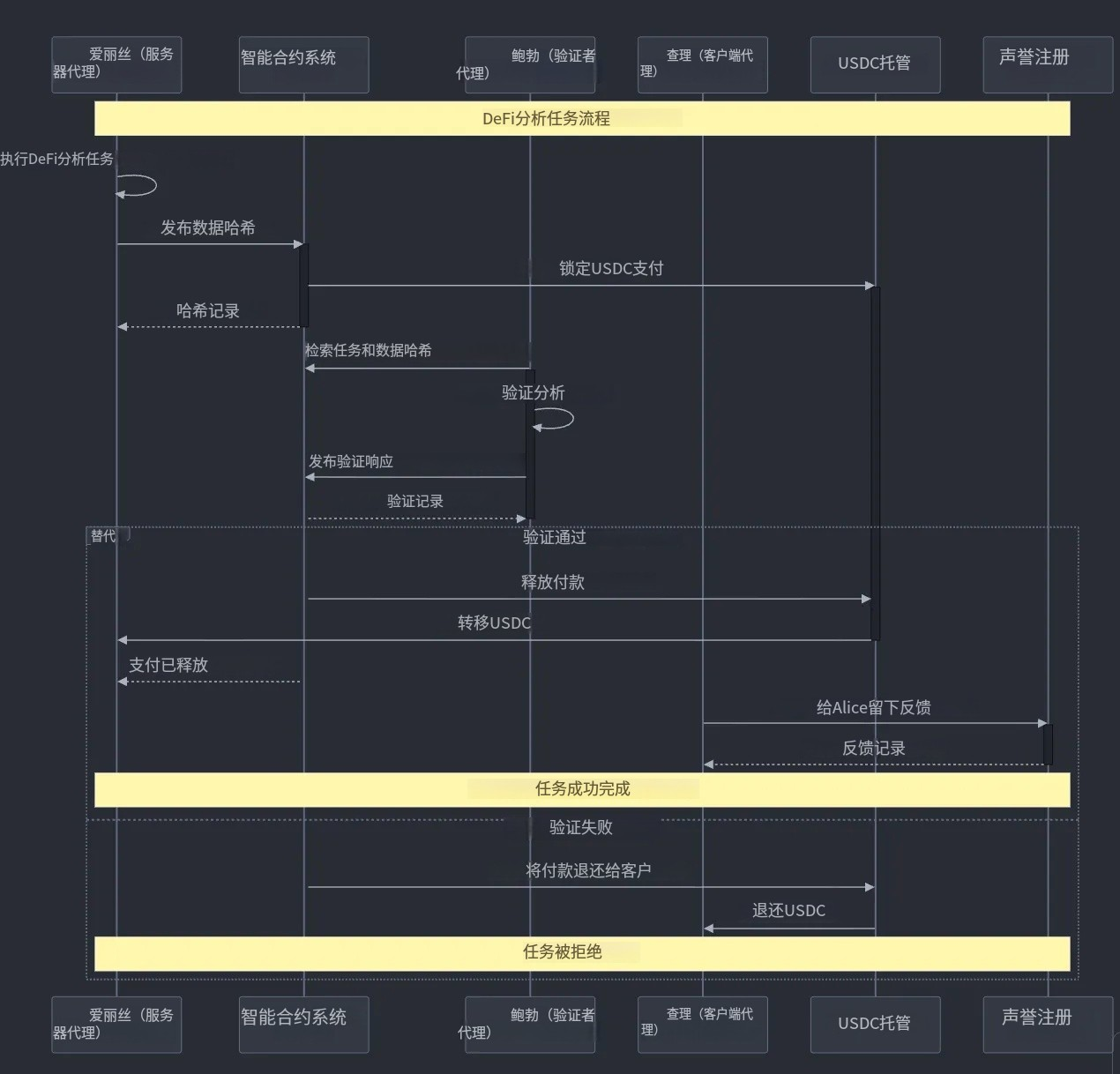
(Source: Researcher Yehia Tarek personal column)
No human intervention is required—three AI Agents complete a commercial transaction entirely through ERC-8004’s trust architecture.
So, how does this connect with x402?
In summary, x402 and ERC-8004 work together:
x402 solves AI Agent payments; ERC-8004 solves trust. For a true autonomous AI economy, both are necessary.
Specifically, x402 standardizes micropayments between AI Agents and users, removing friction and allowing agents to automatically pay one another for completed tasks.
ERC-8004 provides identity and reputation—on-chain verification makes every job and rating traceable.
Here’s a simple analogy:
- x402 = ERC20
- ERC-8004 = Etherscan
x402 lets you pay for API access per call—a payment standard; ERC-8004 is like an on-chain registry for AI Agents, where every Agent is linked to a wallet, discoverable and verifiable.
Both are part of the broader “Crypto x AI” narrative—within the crypto AI economy:
- Crypto AI Economy = Discover AI Agents + Enable AI Agent Communication + Verifiable Computation
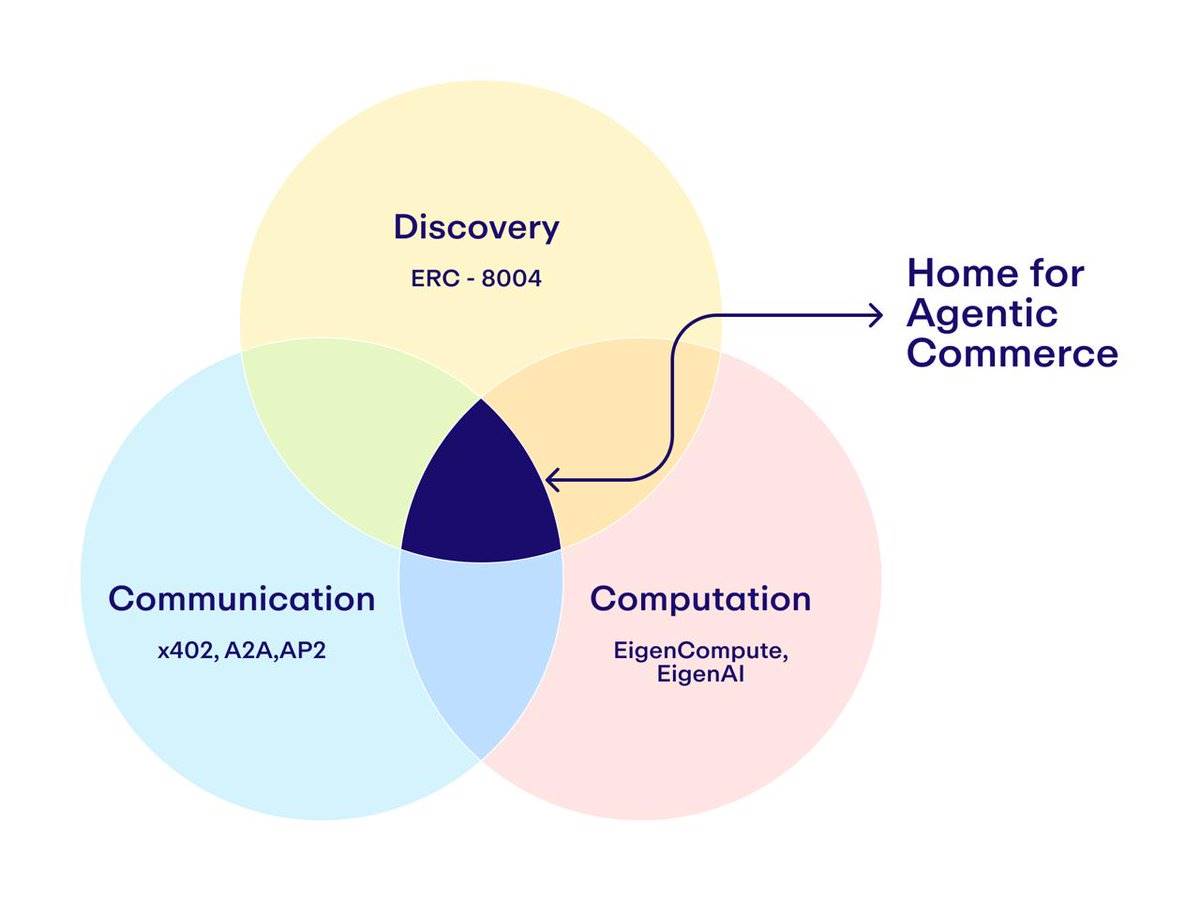
(Image: Twitter user @soubhik_deb)
How do you discover AI Agents? By allowing AI Agents to find each other—ERC-8004 creates the identity registry on Ethereum.
How do AI Agents communicate? x402 is an open standard for agent-to-agent on-chain payments; Google’s A2A protocol also fits in.
How is it all verified? Every AI Agent must perform verifiable reasoning and actions, with records stored where data availability is paramount.
@soubhik_deb’s thread lays out this logic—use it to spot additional project opportunities.
x402 and ERC-8004 are complementary, jointly shaping the full picture of the AI-enabled crypto economy.
For a clear side-by-side comparison, see this chart:
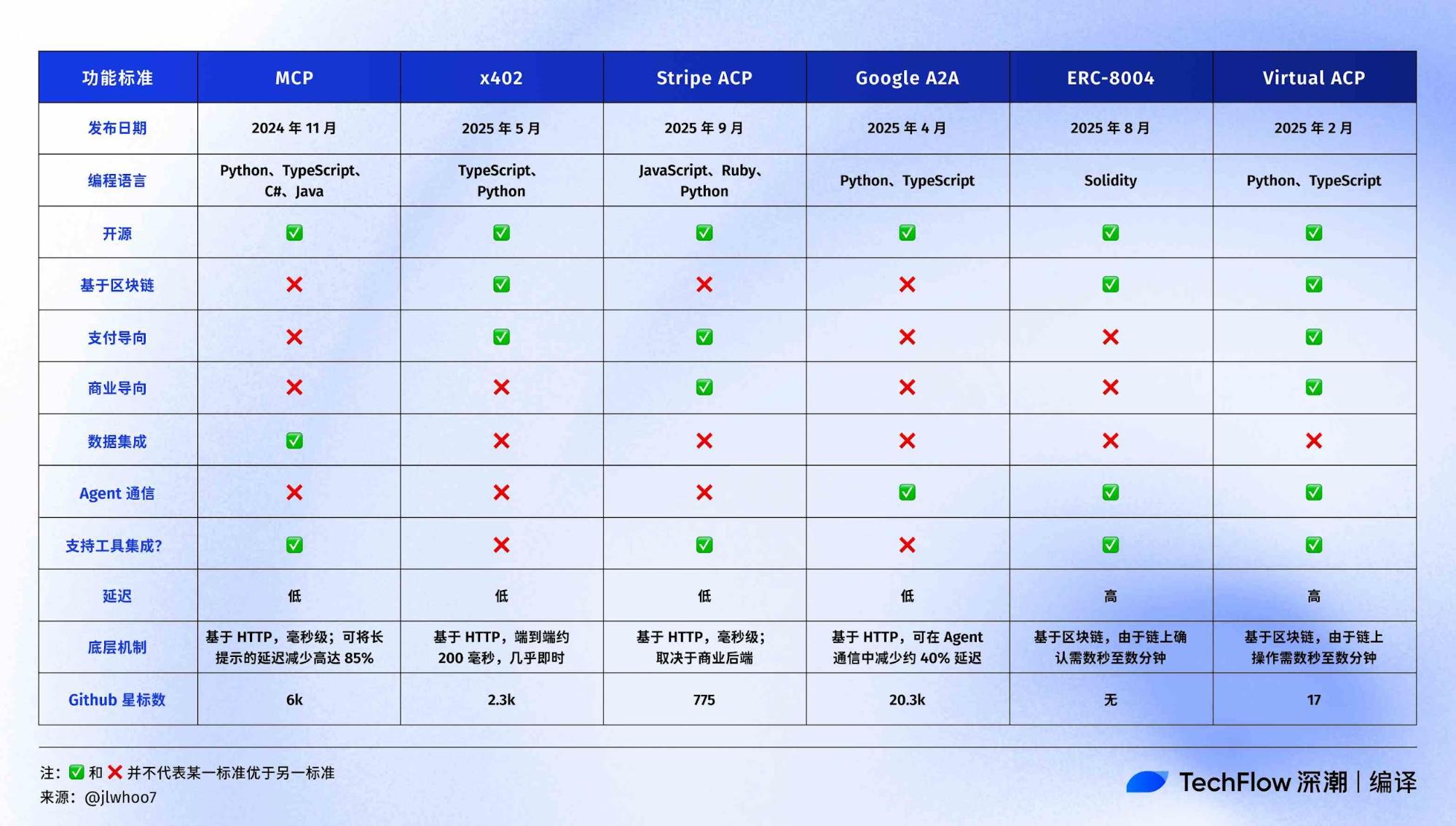
ERC-8004 Narrative: Key Beneficiaries
TL;DR—refer to the chart below.
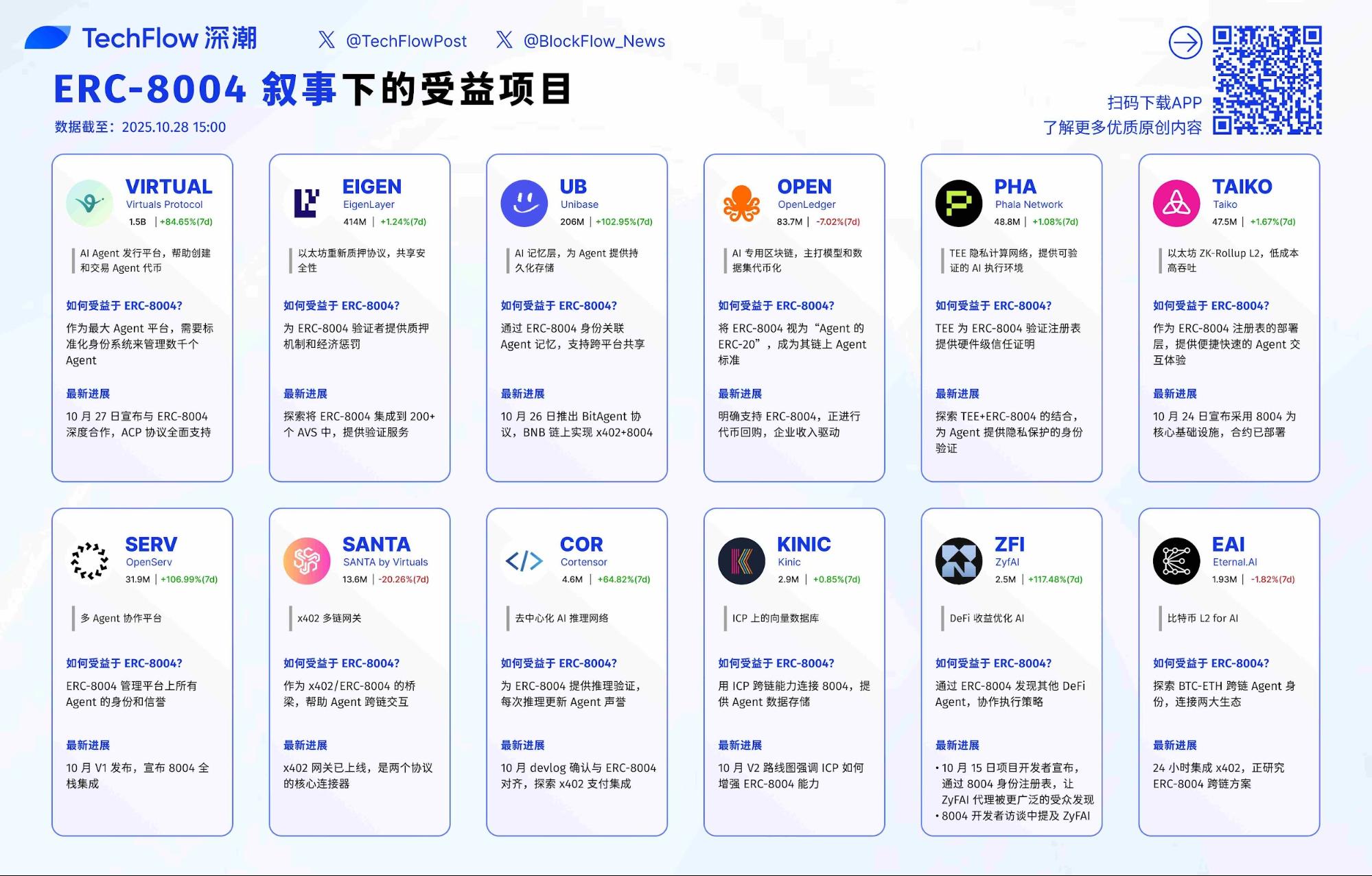
When x402 rallied, payment tokens like PING led the surge. ERC-8004’s opportunity is broader, spanning infrastructure to applications, with unique logic at each layer. Understanding this logic is more important than pursuing individual projects.
- First, the infrastructure layer: Taiko and EigenLayer.
Taiko: L2 Execution
Taiko is proactive because the AI Agent economy demands fast, cost-effective chains. Mainnet is costly—updating identity or reputation costs several dollars in gas, which AI Agents cannot afford. Taiko’s solution: deploy the 8004 registry on L2 to reduce costs. Contracts went live October 24, potentially making Taiko the hub for AI Agent activity.
EigenLayer: Security
The main challenge for 8004 is validator honesty. EigenLayer addresses this with stake slashing: validators stake ETH and lose it for dishonest validation. EigenLayer is integrating 8004 across 200+ AVSs, each potentially a dedicated AI Agent validation service.
Infrastructure logic is straightforward: More AI Agents lead to more transactions and increased revenue.
- Next, middleware: S.A.N.T.A and Unibase.
S.A.N.T.A: Payment Bridge
S.A.N.T.A bridges x402 and 8004. When one AI Agent finds another via 8004 and then needs to pay via x402, S.A.N.T.A facilitates the process—especially for cross-chain payments. For example, if a Solana AI Agent wants to hire an Ethereum AI Agent, S.A.N.T.A enables the transaction.
Unibase: Memory Layer
AI Agents require memory as well as identity. Unibase provides persistent storage, linked to the 8004 identity system. AI Agents can remember interactions, build experience, and even share knowledge. As of October 26, x402+8004 integration is live on BNB Chain—a first mover.
Middleware’s value lies in its irreplaceable connectivity. You can switch L2s, but some connectors are unique.
- Finally, applications—such as Virtuals Protocol.
Virtuals is an AI Agent token launch platform. Using bonding curves, users can create, invest in, and trade AI Agent tokens.
There are now 1,000+ AI Agent projects and $20M+ daily volume.
For Virtuals, 8004 solves a fundamental problem: How can AI Agents identify and interact? The team’s recent Twitter updates confirm ACP protocol changes supporting the 8004 standard, so every Agent token issued gets on-chain identity and reputation.
Which application will break out? Watch for Launchpad-style integrations and new incentive models.
Overall, x402 solves payments; ERC-8004 solves trust. x402 went from launch to breakout in five months; 8004 could progress even faster.
Key date: November 21’s Devconnect features Trustless Agents Day, where the first 8004-based applications may demo live. A breakthrough application could spark the initial hype cycle.
Heading into year-end, expect x402 ecosystem projects to consolidate and likely announce 8004 support. Synergy between the two could create enhanced market effects.
Risk-averse investors may prefer large-cap infrastructure projects that benefit from 8004, while aggressive traders should watch the small-cap projects in the table and look for new entrants.
The crypto market hasn’t seen a true tech-driven narrative in ages. Whether x402 and ERC-8004 are fleeting or transformative—the market will determine their impact.
Legal Notice:
- This article is reprinted from [TechFlow], copyright belongs to the original author [David]. For republication concerns, contact the Gate Learn team for expedited handling.
- Disclaimer: The opinions expressed herein are the author’s alone and do not constitute investment advice.
- Other language versions are translated by Gate Learn. Unless Gate is credited, do not copy, distribute, or plagiarize translated articles.
Related Articles
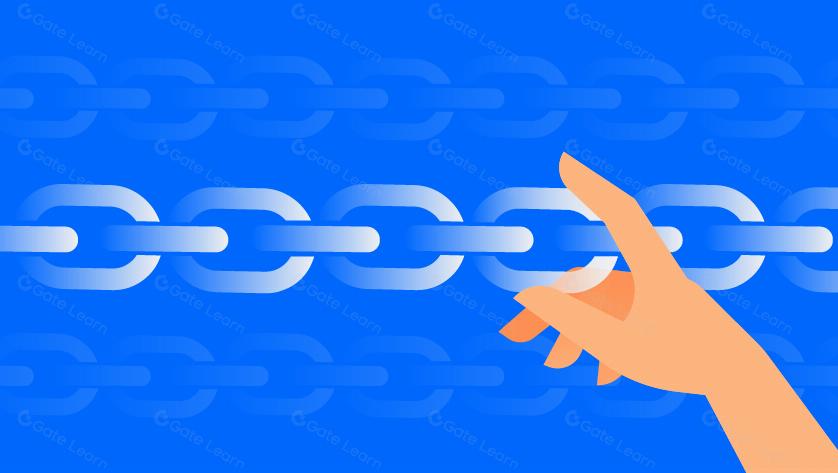
The Future of Cross-Chain Bridges: Full-Chain Interoperability Becomes Inevitable, Liquidity Bridges Will Decline
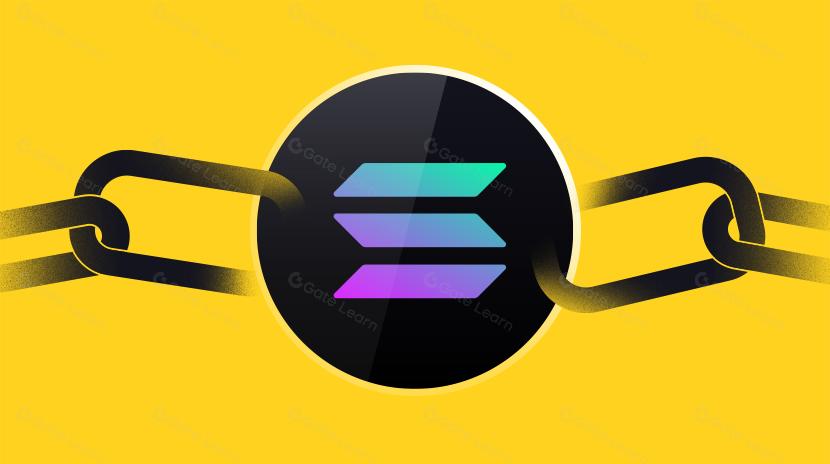
Solana Need L2s And Appchains?

Sui: How are users leveraging its speed, security, & scalability?

Navigating the Zero Knowledge Landscape
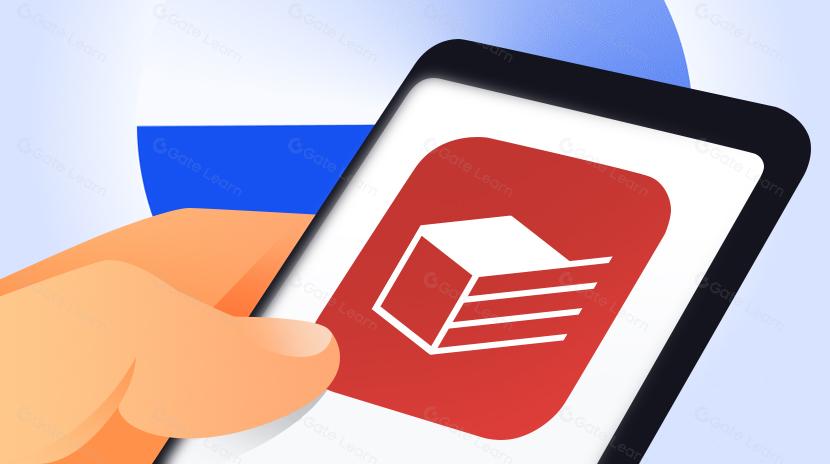
What is Tronscan and How Can You Use it in 2025?
